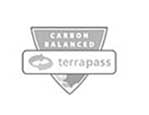Closed Cell & Open Cell Spray Foam R Values
R Value is an important insulation term about measurement. It measures the effectiveness at stopping energy loss by way of conduction, one of the 3 forms of energy transfer.
R value is the only measurement used in building codes today, however it is not the only way to stop energy loss. In fact, it is not even the most important of the 3 transfers of energy to focus on.
Stopping convection heat transfer is the most effective way to insulate, but we’ll get to that below.
The third form of energy transfer is radiation. For home insulation, this is the least important and effective at saving energy, so don’t be fooled by tinfoil insulations that boast that it’s the insulation NASA uses. Unless your home is in space, stick to what works here on Earth.
First, let’s discuss R value in a practical, real world way. When you look at a roll of batt insulation, it is often marketed by it’s total R value. A 3.5″ inch deep fiberglass, rockwool, or recycled denim batt for a typical 2×4 wall may say it provides R-11 or R-13 depending on fiber density. For 6 inches, R-15 or R-19, etc.
Closed Cell Spray Foam R Values
Why spray foam insulation is so effective in meeting code requirements is that it has a higher R Value per inch of product used than batts. For example, closed cell spray foam, depending on brand, can offer an R-6 or R-7 per inch. That means, if you used Foam it Green closed cell (which is R-7 per inch), it’s R Value for a 3.5″ deep wall cavity would be R-24.5.
This is very important in situations where your code requires an R-21 for the wall, but you only have a 2×4 stud because closed cell spray foam is the only way you would achieve the required R Value to meet code.
Open Cell Spray Foam R Values
Open cell spray foam typically has an R Value of 3.5 per inch, and it should be noted that open cell does not form a tight air seal. It performs much better than any form of batt for stopping air flow, but it is not as complete of an air seal as closed cell spray foam.
So, let’s find out what you need and discuss how you can get there effectively but also cost efficiently.
How to Find Your Recommended R Value
Step 1: Find Your Zone # on the Map Below
Step 2: Look in the chart below to see recommended R-Values (if only using Fiberglass)
Like we said, R Value isn’t the only way to get results. Heck, it’s not even the most effective way to get results.
IECC Codes recognize this and have put in stipulations to address how effective a tight air seal is for a building’s insulation.
For example, Residential ICC Code 5.2.9 R806.5 For Attic Insulation says air-impermeable insulation is not required to meet the R-value minimum listed in the chart above. Meaning, if you use a tight air seal, you don’t need to use as high of a total R value.
Here’s another specific code example. N1102.2.2 says the minimum required R-value for attics being covering completely with an air tight seal is R-30 [not R-49].
Stopping conduction with an air seal is so effective that there are places it is required in code.
- Attic Floors and Heating Ducts (Residential ICC N1103.3 & N1102.4.5) requires an air seal around recessed lighting.
- Residential ICC N1102.4.1.1 (R402.4.1.1) says:
A continuous air barrier should be installed in the building envelope.
The junction of the foundation and sill plate should be sealed (rim joists).
The junction of the top of exterior walls should be sealed.
Knee walls should be sealed.
Air sealing should be done between the garage and conditioned spaces.
Recessed light fixtures installed in the building thermal envelope should be sealed to the finished surface.
Batts of any kind or thickness can never provide a tight air seal. More than 50% of stud cavities are not perfect 16″ or 24″ on center. To try to fit batts perfectly would involve a lot of detail work, and batt installers often compete on how fast they can throw up their insulation. It’s easy to see how a lot of energy is getting lost through convection of not having a tight air seal.
In Summary:
Sealing Air Leaks Saves Up to 40% of Your Energy Bills.
Don’t Waste Money on High R-Values w/o Sealing Your Home.
Foam it Green Spray Foam Seals Air Leaks.
What can Foam it Green do for you?>>
Learn how to combine Foam it Green with fiberglass to save money>>
Spray foam kits are quicker and easier to use plus you get a seamless air barrier and high r-value in just 1 inch. Choose Foam It Green spray foam insulation kits and don’t settle for less than you deserve.
If you’d like to start saving money and time today, buy Foam it Green Spray Foam Insulation>> now or call us at 800-516-0949. In 60 seconds you’ll be on your way to paying lots less when you use Foam it Green.









